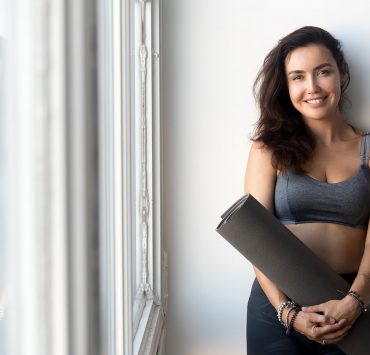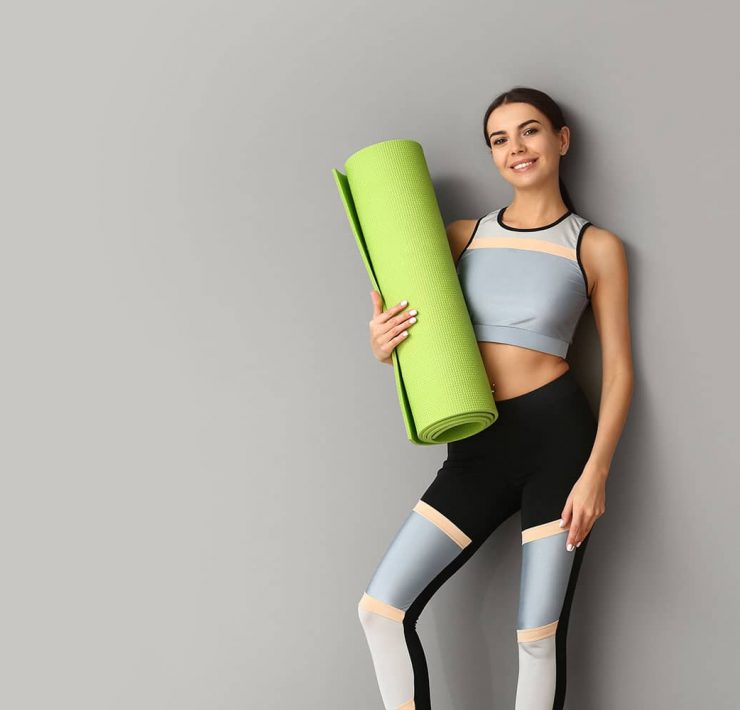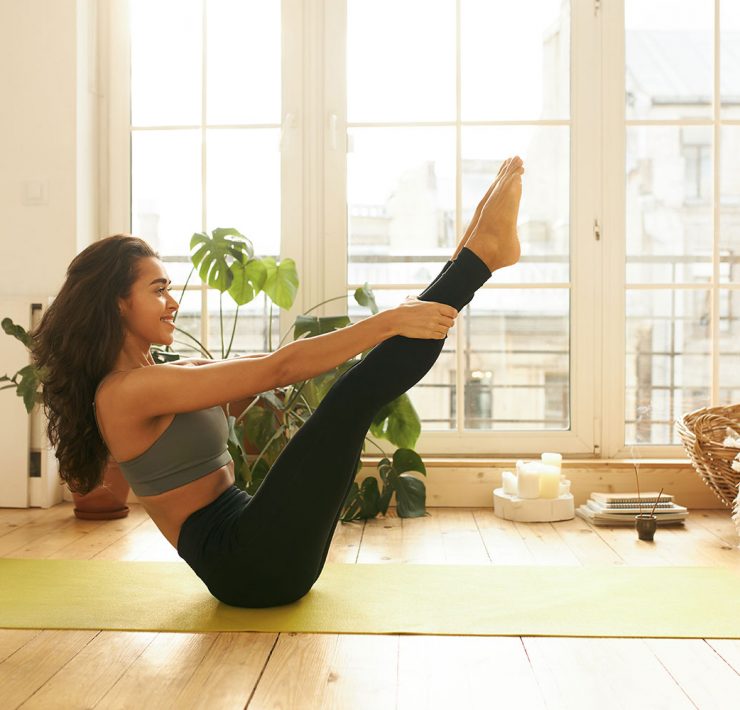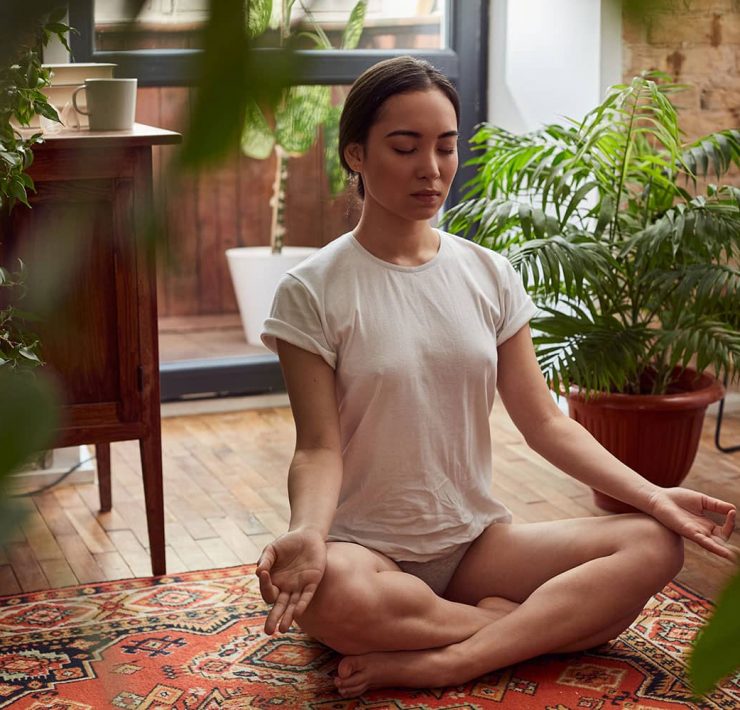
Lauren Howard holds a master certification in reiki, or energy…
If you’re new to yoga, you might be wondering how much is too much and how little is too little.
Some practitioners suggest practicing 2 to 3 times a week. Others say differently. But even if you only practice for one hour a week, you’ll gain the benefits.
Unfortunately, there’s no clear-cut answer to this question.
It depends on what you want to gain from your yoga practice.
Maybe you’re looking to build a stronger mind and body. Maybe you’re looking for something entirely different.
But doing yoga daily has proven benefits. It can help you boost your mood and better cope with anxiety and depression. It can also make you stronger and more flexible. Having a daily routine can help you instill a pattern of self-care.
You will find that your natural energy and vitality are increased. Your ability to stay calm during stressful moments will greatly improve. But again, depending on what you want out of yoga will determine the frequency of your practice.
Before we dive in, let’s get into some Yoga 101. This will help to inform you of what kind of practice you want to pursue.
What Is Yoga?

Yoga comes from the Sanskrit word “Yuj” which means to yoke or bind. Yoga is also interpreted as meaning “union” or method of discipline.
The Indian sage Patanjali collated the practice of yoga into the Yoga Sutras almost 2,000 years ago. The Yoga Sutras are a collection of 195 statements that serve as a philosophical guide to yoga. In it, Patanjali outlines the Eight Limbs of Yoga. This seeks to refine our behavior to the outer world. Then it focuses us inward until we reach samadhi or enlightenment.
Today, most yoga practitioners only engage in the third limb, the asana of physical practice. This program of physical postures is designed to purify the body. It provides physical strength and stamina that will aid practitioners for long periods of meditation.
What Is Hatha?
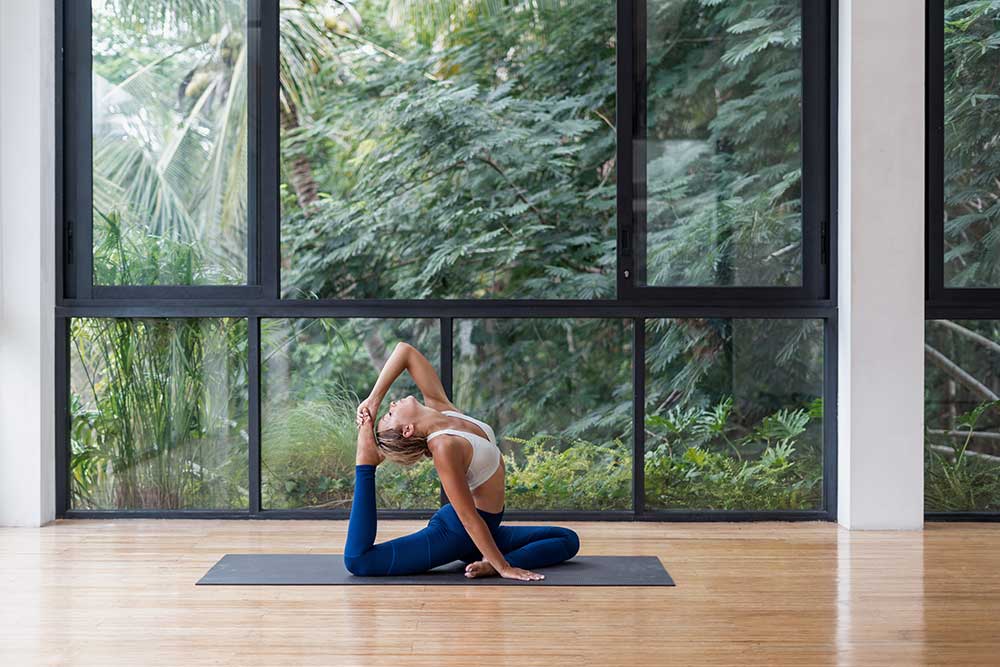
Hatha means willful or forceful. Therefore, hatha yoga refers to a set of physical exercises and sequences. These sequences align your skin, muscles, and bones. The postures are also designed to open channels in the body that allows energy to flow freely.
Hatha can be translated differently when broken down. “Ha” means “Sun” while “tha” means “Moon.”
In this way, Hatha refers to balance.
This balance can be between the masculine and the feminine. As the sun is active and hot, the moon is receptive and cool. Hatha provides us a path to create balance and unite these opposites.
In our physical bodies, hatha yoga helps us develop balance, strength, and flexibility. But we can also apply these teachings to our efforts off the mat. By surrendering to each pose, we can surrender to different parts of ourselves.
Hatha yoga is a powerful tool for self-transformation.
It asks us to bring our attention to our breath and still the fluctuations of the mind. By practicing hatha yoga, you will become more present in each moment.
What Is Om?
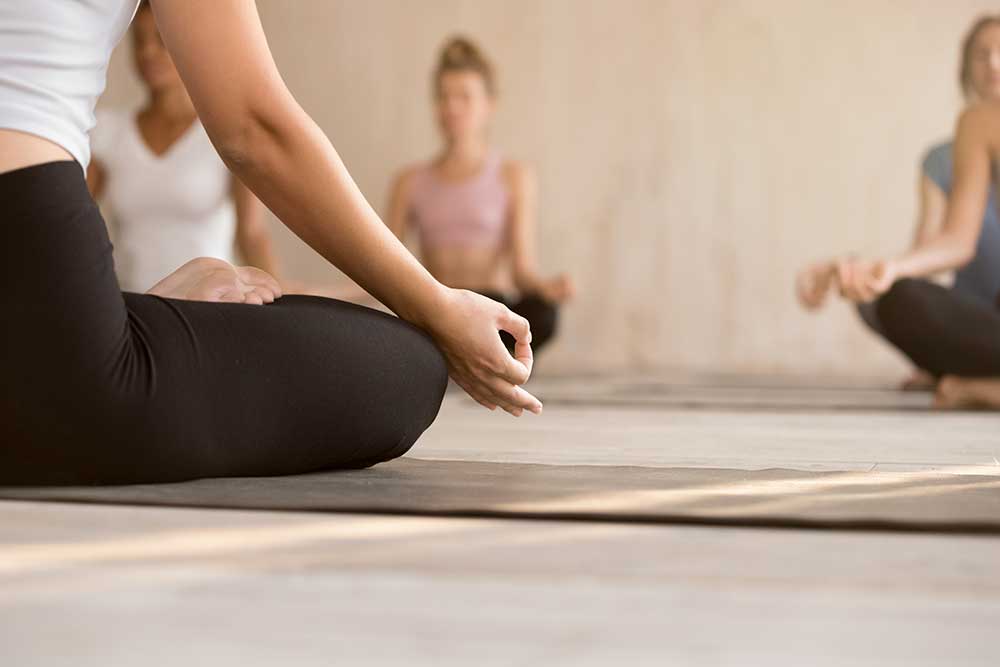
Om is a mantra or vibration. It is traditionally chanted at the beginning and end of yoga sessions.
Om is said to be the sound of the universe.
Somehow, ancient yogis understood that the entire universe is constantly moving. It is never solid or still. Instead, everything pulsates and creates a rhythmic vibration. Ancient yogis acknowledged this vibration as the sound of om.
We may not be aware of this sound in our daily lives. But if you listen close enough, you can hear it everywhere you go.
Chanting Om helps us to recognize our experience as a reflection of the whole universe.
We exist between the setting sun and the rising moon. We ebb and flow with the tides and beat to the sound of our hearts. Om is what guides us through this universal movement. Om gives our breath, awareness, and physical energy a bigger magnitude to connect with. This force is both uplifting and soothing.
What Makes Yoga Different From Other Forms of Fitness?
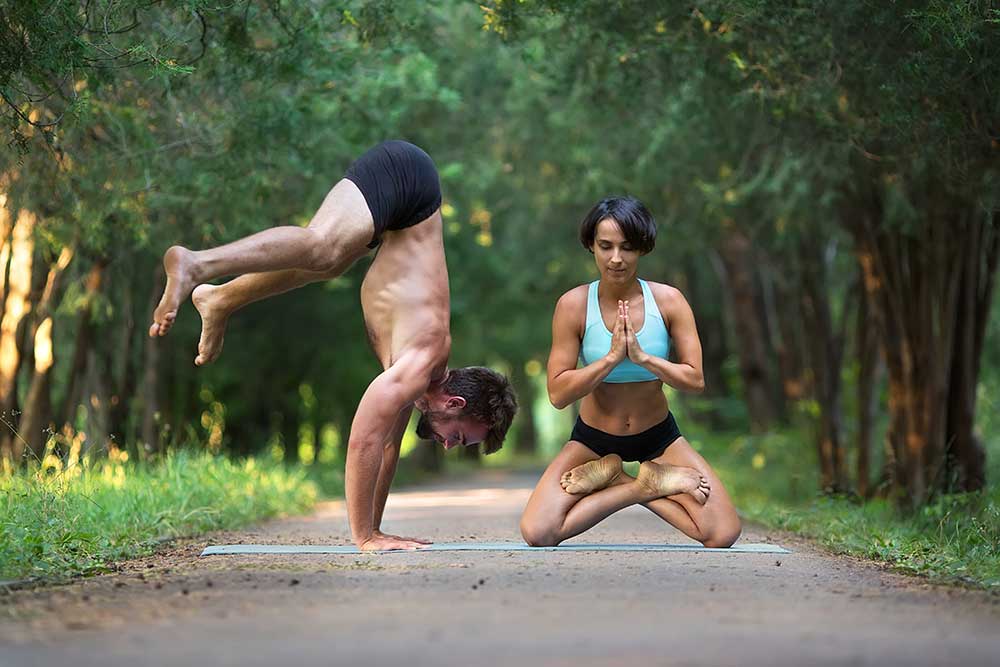
Yoga is much more than just the physical postures. Patanjali’s Eight-Fold Path demonstrates how the physical practice is just one aspect of the whole. But the asana practice connects the movement of the body to the fluctuations of the mind.
In this way, yoga naturally connects the mind, body, and breath.
This inward attention teaches us to recognize our habitual thought patterns. It encourages us to note these patterns without labeling, judging, or changing them. Yoga is more about cultivating awareness. It is about seeing these postures as tasks rather than goals.
Some people think they can’t do yoga because they’re not flexible. This is far from the truth.
By doing yoga, your body will most likely become more flexible. But yoga can also be customized to meet your needs.
Over time, your newfound agility will help balance your strength and coordination. As your body becomes more flexible, so will your mind. You will also cultivate more confidence and a greater sense of well-being.
How Do I Begin Doing Yoga?
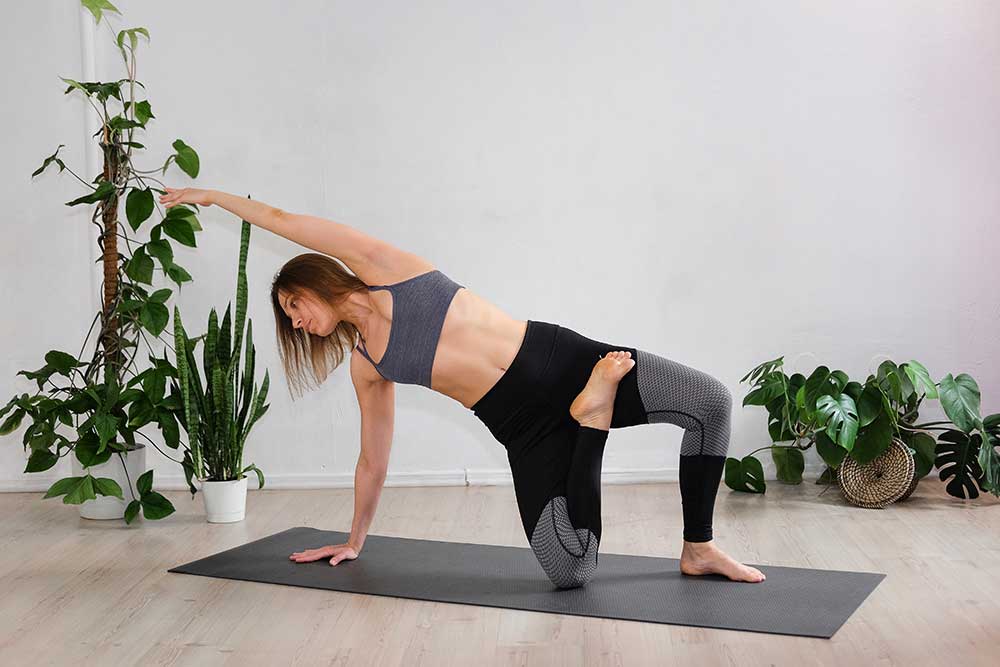
To start, it is helpful to have a pair of yoga leggings or shorts. Practice with a t-shirt or top that doesn’t constrict you but isn’t too loose. You can also bring a towel to class in case you get overheated.
It is also important to not eat right before class. Yoga will have you twisting from side to side, upside down, and bending forward and back. So make sure that your last meal is fully digested.
These tips will help you get physically prepared. But beginning yoga means having an open mind.
If you’re willing to try new things, you’re ready to start doing yoga.
If You Want a Calmer Mind
Yoga can help you develop the tools to handle your anxiety and depression. Just doing simple yoga every day can be greatly beneficial.
This doesn’t mean you have to go to a class every day. Instead, your yoga practice can be a three-mind breathing exercise. It can truly be customized to what fits your needs.
Practicing daily restorative yoga poses can help promote stress relief. It can also aid in anxiety reduction, better sleep, and more balanced emotions.
Below are some recommended poses for a calmer mind.
Balasana – Child’s Pose
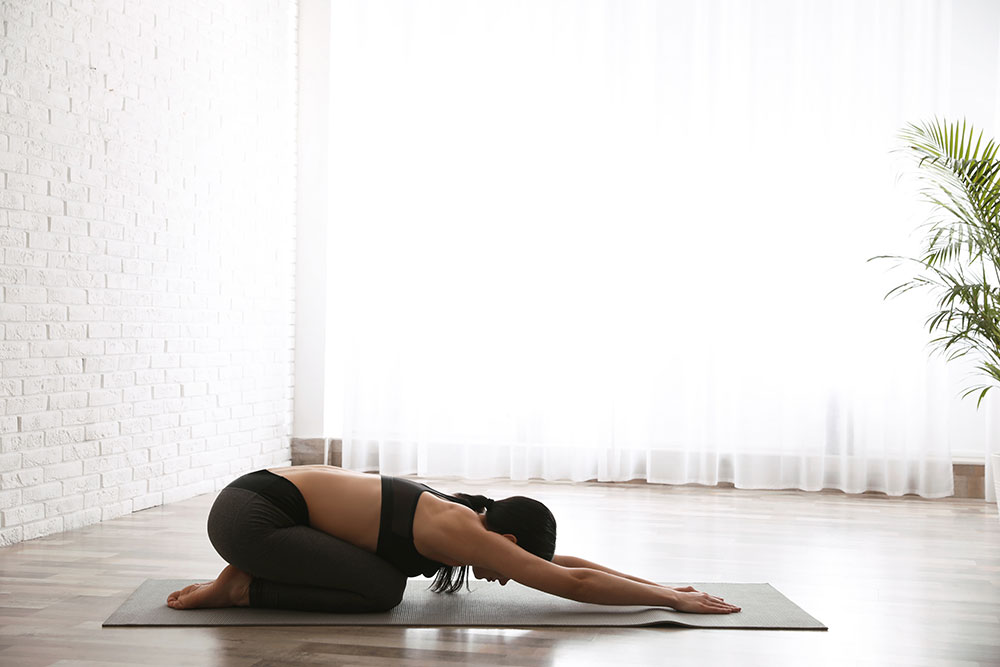
Child’s Pose will help your whole body surrender to gravity. It will get you feeling your breath throughout your entire spine. You can stay in this pose for as long as you need to.
Kapotasana – Pigeon Pose
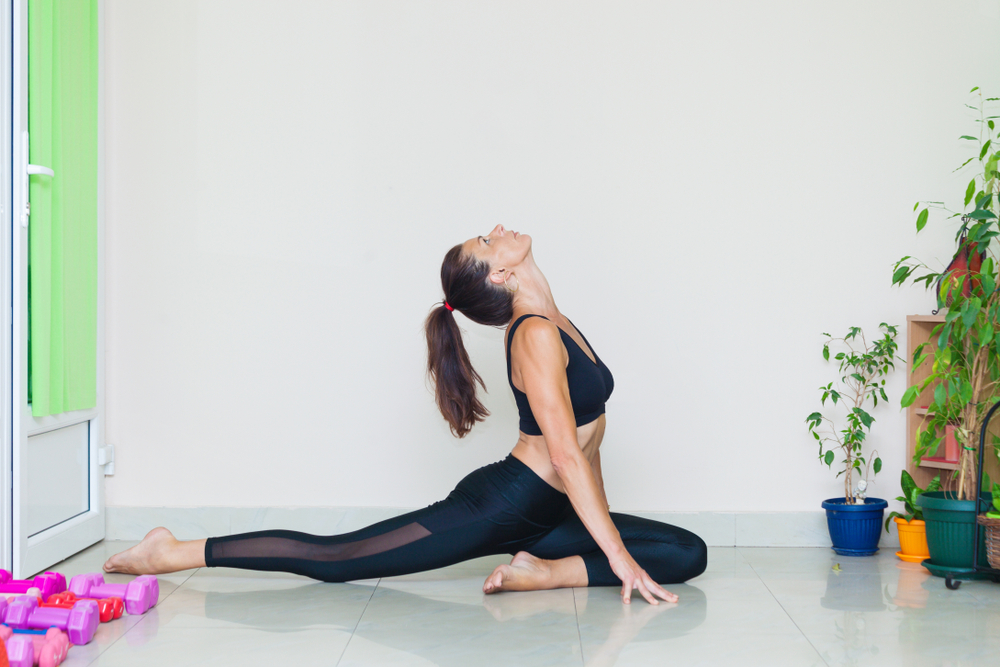
This posture is great for flexibility and relaxation. It will target your hip flexors and coax them to surrender to the ground. Remember to switch sides and hold for the same amount of time.
Utkata Konasana – Goddess Pose

Goddess Pose is a great way to test your strength while remaining calm. This hip opener will quiet the noisiness of your thoughts. It will have you focused on the present moment.
Viparita Karani – Legs Up the Wall
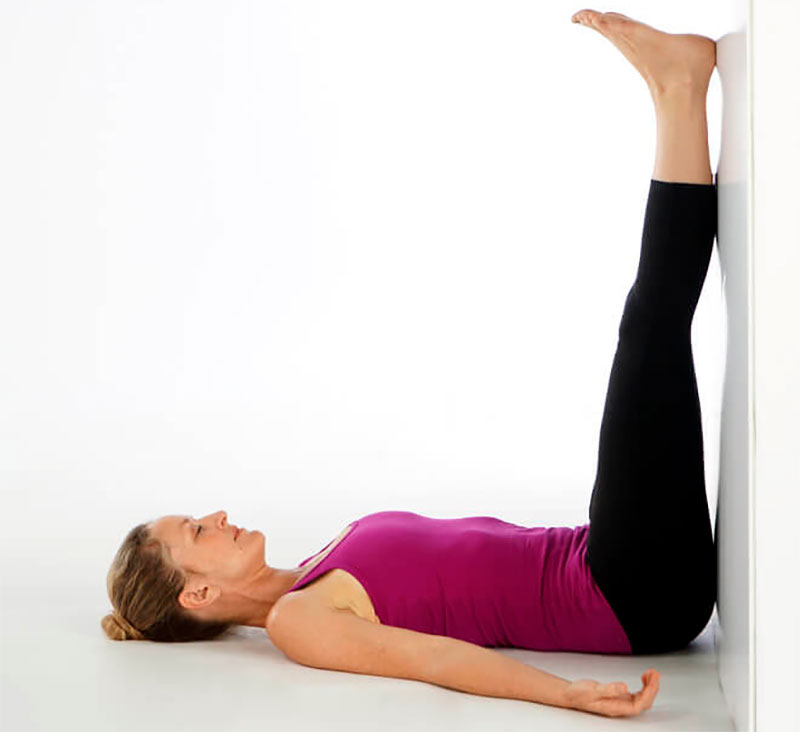
This posture is a great way to drain the blood from your legs. Inverting your body will also give you a new perspective to consider.
All of these poses are easy to do without going to a studio. They can be done anywhere.
But these are not the only poses available to you. As you explore your physical practice, notice any poses that you find to be relaxing or stress-relieving. Some people relieve their anxiety by doing a vigorous handstand. Others find that child’s pose is a great way to ground down.
Only you know what is best to create a calmer mind for yourself.
If You Want Better Balance
Balance is a daily practice. It will depend on how you sleep and what you’ve done during the day. But a great yoga pose to help your balance is Mountain Pose.
Tadasana – Mountain Pose
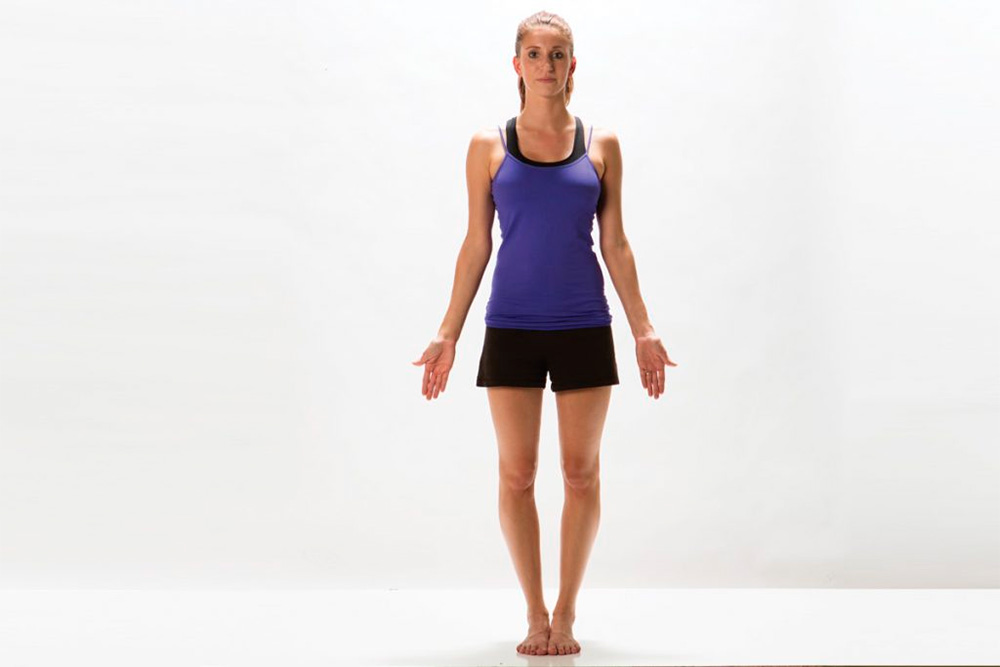
Mountain Pose helps you set a solid foundation. It will root your feet into the floor and make your legs lift your entire body. This pose tests your stability and gets you grounded in your body.
Garudasana – Eagle Pose
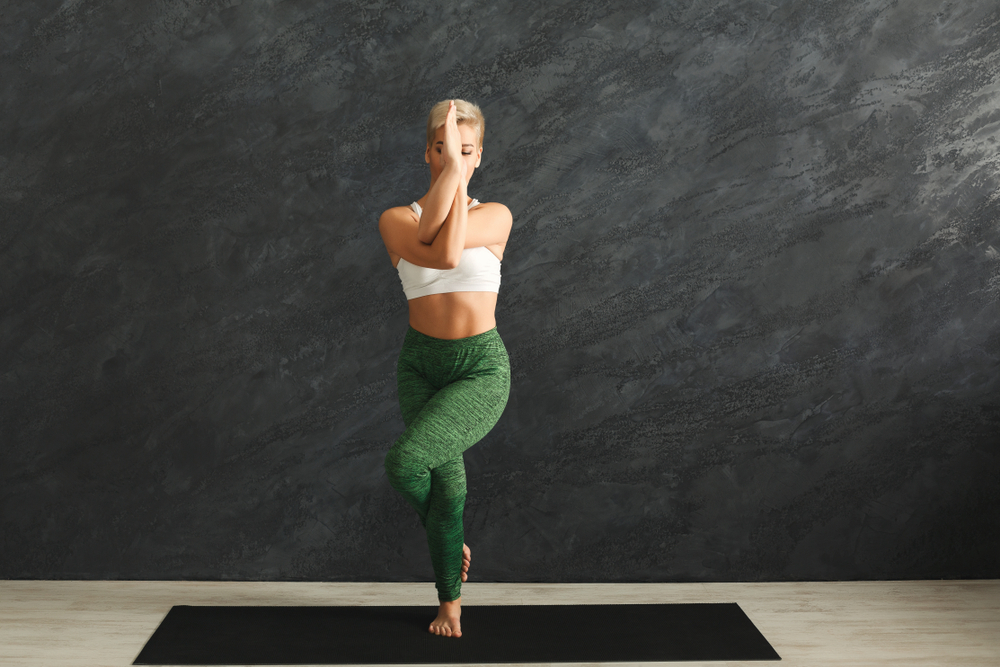
This pose works the subtle and intricate muscles of the body. The binding of the arms and legs will challenge your body as well as your mind.
Doing any kind of yoga will help your sense of balance. It can also strengthen your core, setting you up for a solid foundation.
If You Want More Flexibility
For the best results, try attending a yoga class 3 to 5 times a week. Twisted lunges, crescent lunges, and splits are best practiced with a licensed yoga teacher at your side. These postures can help you improve your form. The yoga instructor will also make sure you never push past the edge of hurting yourself.
Cultivating flexibility can reduce muscle soreness and improve your posture.
More people experience tightness in their hips and hamstrings. These areas can also cause chronic pain so keeping them loose is essential.
Below are some poses you can try to improve your flexibility.
Supta Padangusthasana – Reclined Hand to Big Toes
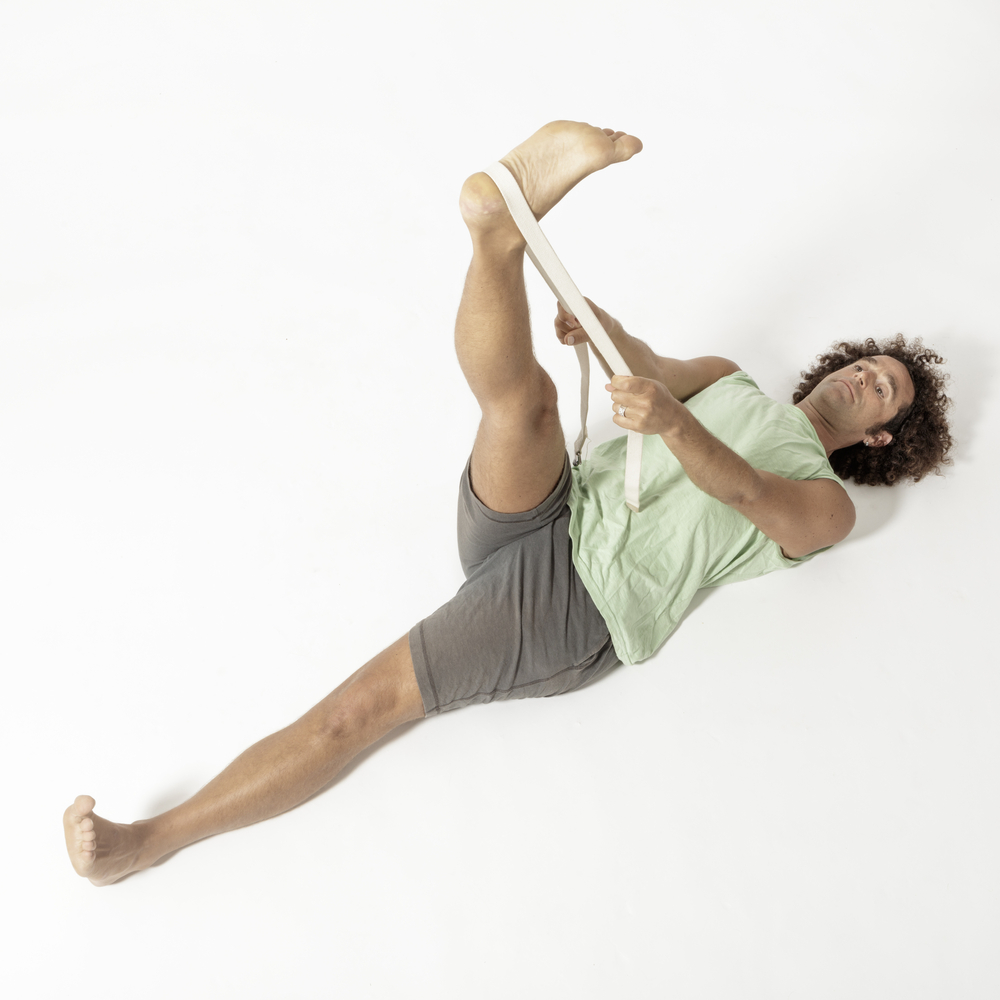
This posture is best practiced with a strap. If you’re doing this at home, you can use anything similar to a belt. This will help you test your flexibility without pushing you too far.
Parsva Balasana – Thread the Needle

This is a great grounding posture that also opens up your torso. It twists your side open and up to the sky while promoting a steady breath and a calm mind.
Eka Pada Kapotasana – Pigeon Pose

Again, Pigeon Pose is great for flexibility. It will also keep you in the present moment as you focus on opening up your hips.
Uttanasana – Forward Fold Pose

A simple forward fold can help you release your back. If you need to modify, you can always rest your hands on your shins or knees. Only go as far as you can comfortably.
Parivrtta Sukhasana – Seated Twist Pose

Seated Twist will open up your entire torso and side body. You can take this pose as deep as you feel comfortable. It will also improve your posture.
Parivrtta Ardha Chandrasana – Revolved Half Moon Pose

This posture will fire up your core while opening up your side body. It’s also a great pose for balance and cultivating a steady breath.
If You Want Stronger Muscles
Gaining stronger muscles will depend on the type of class you attend rather than how many times you attend it.
Focus on strength-based classes like Power Vinyasa or Power Yoga. The physicality of these classes will transform your body. Try taking these classes 3 times a week. Be sure to give your body enough time to rest and recharge in between.
If you’re not able to make it to the studio, you can try these challenging postures below. Hold each of them for 1 to 2 minutes at a time.
Virabhadrasana 2 – Warrior 2 Pose

Warrior 2 will activate your inner power. It will fire up your leg muscles while toning your core and arms.
Virabhadrasana 3 – Warrior 3
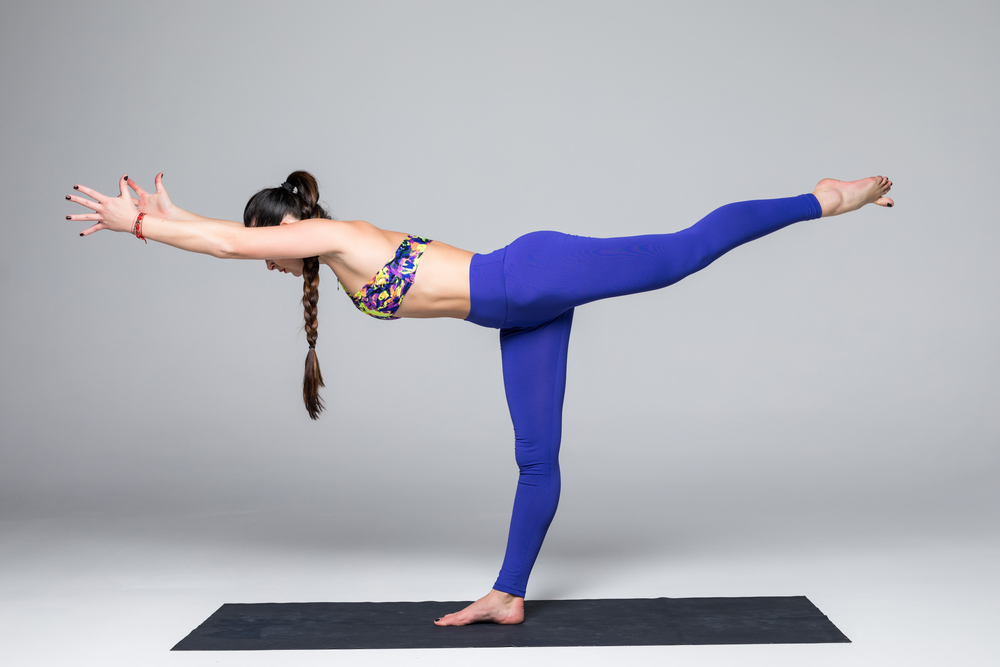
This is a challenging posture that will test your balance. Standing on one leg, you’ll work on toning your muscles while lifting your entire body. Remember to switch and repeat on both sides.
Paripurna Navasana – Boat Pose

This pose will fire up your core like no other. It requires you to lift your entire body while balancing on your sitz bones. It will tone the muscles in your abdomen, legs, and arms.
Chaturanga Dandasana – Four-Limbed Staff Pose
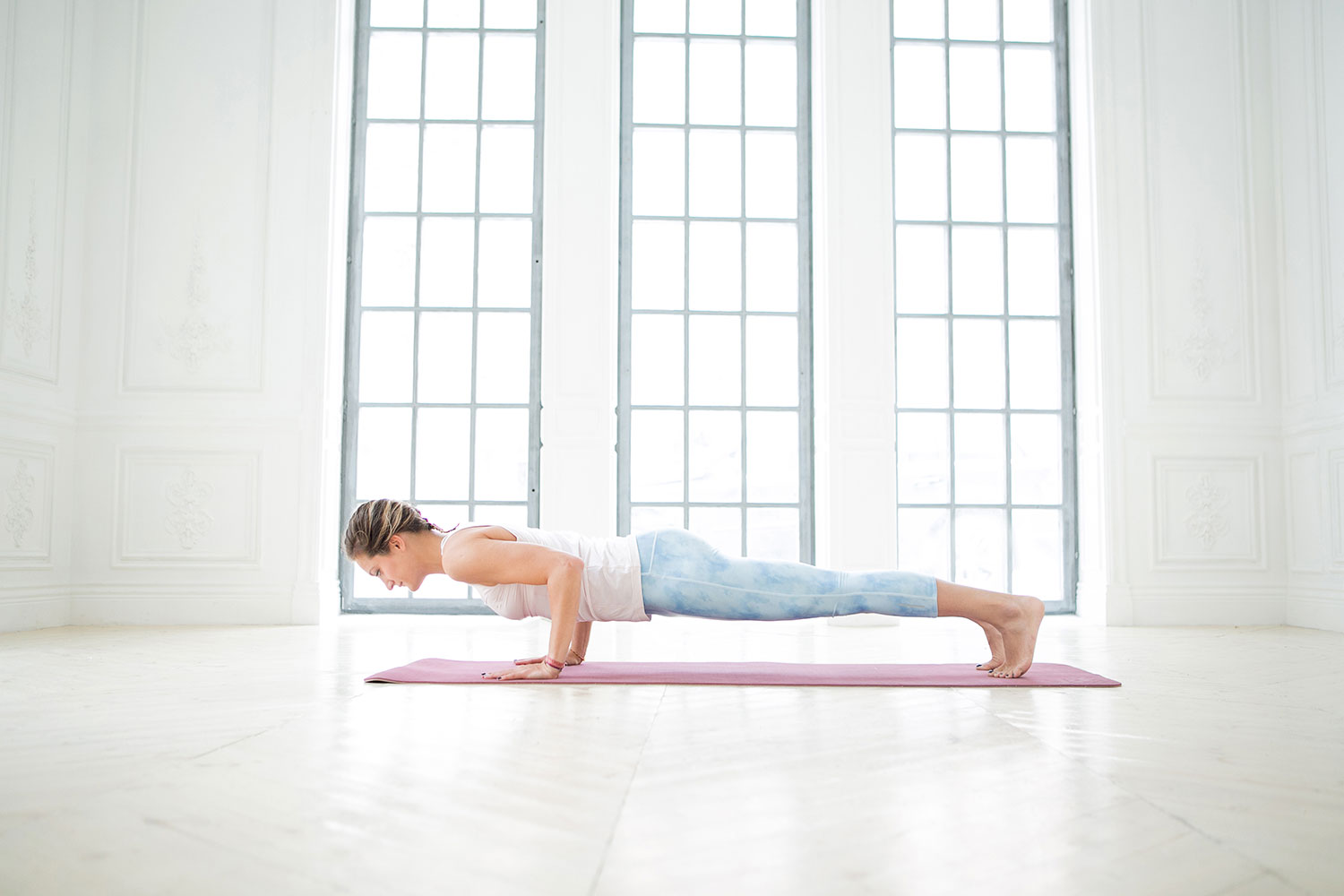
Chaturanga is a great way to develop arm strength. It is often called the yogi push up. Practicing this posture will also activate your core.
Phalakasana – Plank Pose
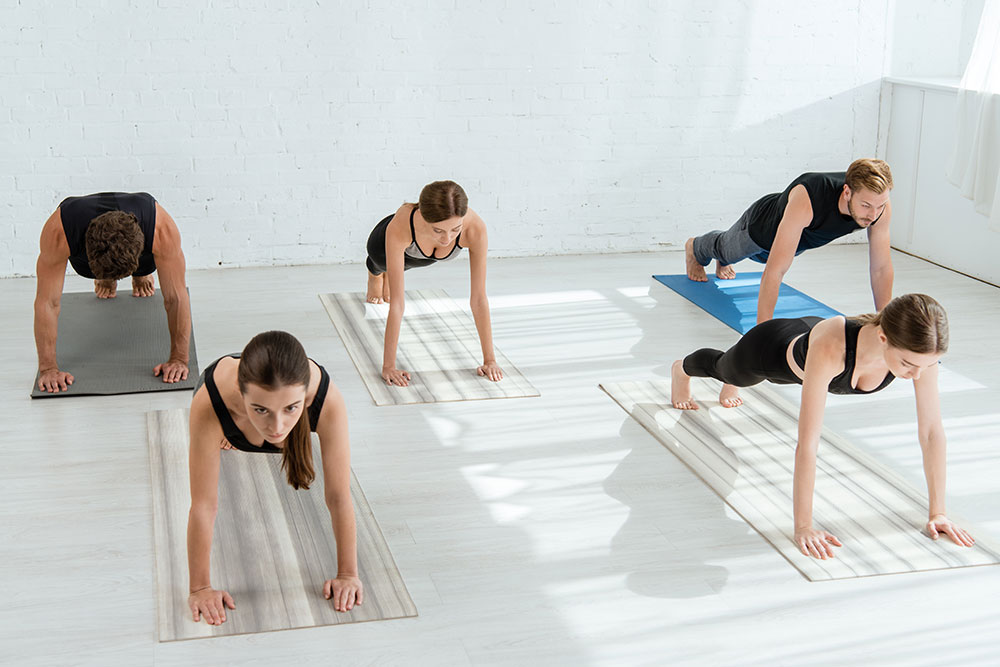
Getting your body aligned just right is the key to this pose. You’ll want to flatten out your whole spine so you resemble a plank. You can also modify this posture by coming down on your forearms.
Utkatasana – Chair Pose
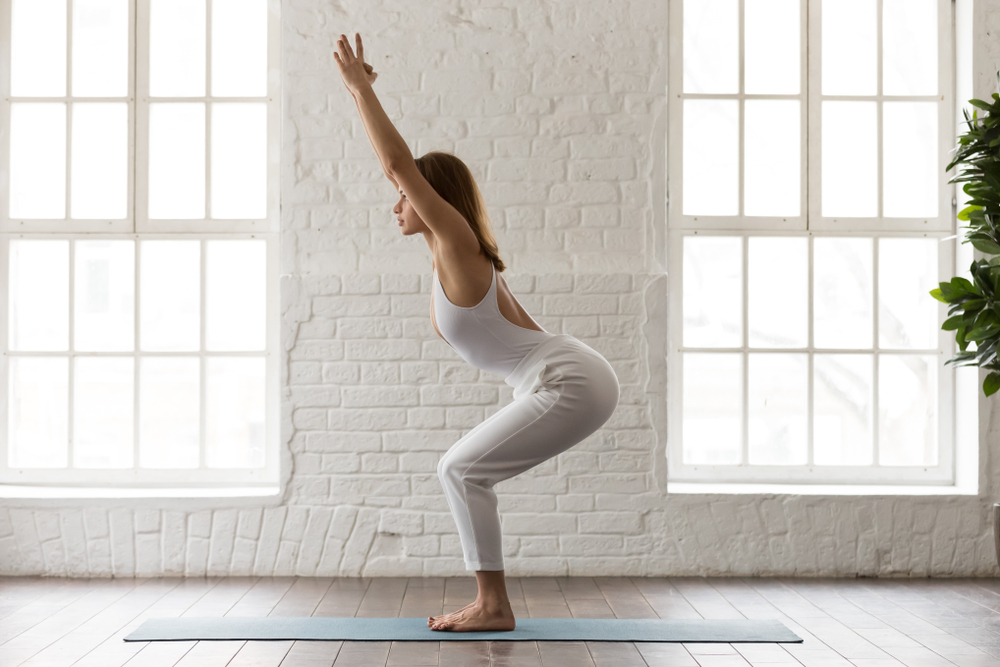
Chair Pose is a great way to fire up the leg muscles. And you can do this pose anywhere. It will also help to align your spine and improve your posture.
Final Thoughts
There’s no clear cut answer to how often you should practice yoga. The frequency of your practice depends on what you want to gain and how much time you have.
If you’re interested in yoga as more than just a physical practice, try learning about the Yoga Sutras. Tapping into these spiritual guides will help you expand your practice emotionally.
The very beauty of yoga is that it is customizable.
Whatever you’re looking to gain, you can tailor yoga to fit your needs. Just enter into it with an open mind and an open heart.
What's Your Reaction?
Lauren Howard holds a master certification in reiki, or energy healing, and has been practicing yoga for over 20 years. She began freelance writing as a means of spreading her truth and knowledge with a broader audience.






